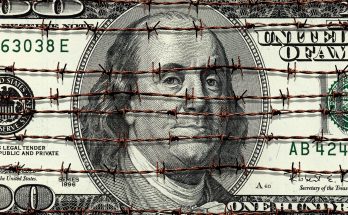Yes, there is a positive correlation (a relationship between two variables in which both move in the same direction) between risk and return—with one important caveat. There is no guarantee that taking greater risk results in a greater return. Rather, taking greater risk may result in the loss of a larger amount of capital.
A more correct statement may be that there is a positive correlation between the amount of risk and the potential for return. Generally, a lower risk investment has a lower potential for profit. A higher risk investment has a higher potential for profit but also a potential for a greater loss.
key takeaways
A positive correlation exists between risk and return: the greater the risk, the higher the potential for profit or loss.Using the risk-reward tradeoff principle, low levels of uncertainty (risk) are associated with low returns and high levels of uncertainty with high returns.An investor needs to understand his individual risk tolerance when constructing a portfolio.
Risk and Investments
The risk associated with investments can be thought of as lying along a spectrum. On the low-risk end, there are short-term government bonds with low yields. The middle of the spectrum may contain investments such as rental property or high-yield debt. On the high-risk end of the spectrum are equity investments, futures and commodity contracts, including options.
Investments with different levels of risk are often placed together in a portfolio to maximize returns while minimizing the possibility of volatility and loss. Modern portfolio theory (MPT) uses statistical techniques to determine an efficient frontier that results in the lowest risk for a given rate of return. Using the concepts of this theory, assets are combined in a portfolio based on statistical measurements such as standard deviation and correlation.
The Risk-Return Tradeoff
The correlation between the hazards one runs in investing and the performance of investments is known as the risk-return tradeoff. The risk-return tradeoff states the higher the risk, the higher the reward—and vice versa. Using this principle, low levels of uncertainty (risk) are associated with low potential returns and high levels of uncertainty with high potential returns. According to the risk-return tradeoff, invested money can render higher profits only if the investor willaccept a higher possibility of losses.
Investors consider the risk-return tradeoff as one of the essential components of decision-making. They also use it to assess their portfolios as a whole.
Risk Tolerance
An investor needs to understand his individual risk tolerance when constructing a portfolio of assets. Risk tolerance varies among investors. Factors that impact risk tolerance may include:
the amount of time remaining until retirementthe size of the portfoliofuture earnings potentialability to replace lost fundsthe presence of other types of assets: equity in a home, a pension plan, an insurance policy
Managing Risk and Return
Formulas, strategies, and algorithms abound that are dedicated to analyzing and attempting to quantify the relationship between risk and return.
Roy's safety-first criterion, also known as the SFRatio, is an approach to investment decisions that sets a minimum required return for a given level ofrisk.Its formula provides a probability of getting aminimum-required returnon a portfolio; an investor's optimal decision is to choose the portfolio with the highest SFRatio.
Another popular measure is theSharpe ratio. This calculation compares an asset's, fund's, or portfolio's return to the performance of a risk-free investment, most commonly the three-month U.S. Treasury bill. The greater the Sharpe ratio, the better the risk-adjusted performance.
This article is from https://www.investopedia.com/, if there is any copyright issue, please contact the webmaster to delete it.









